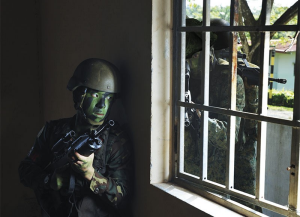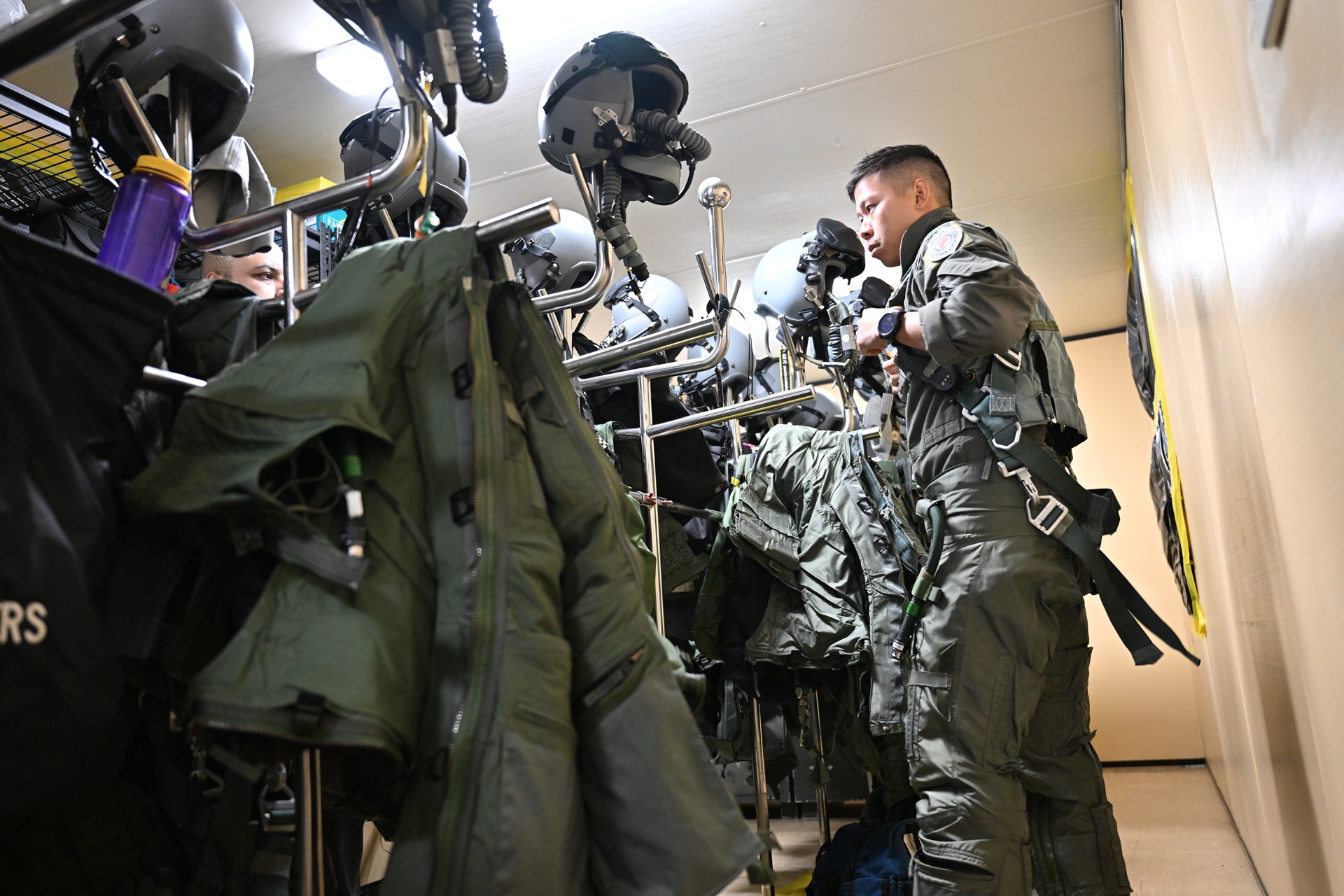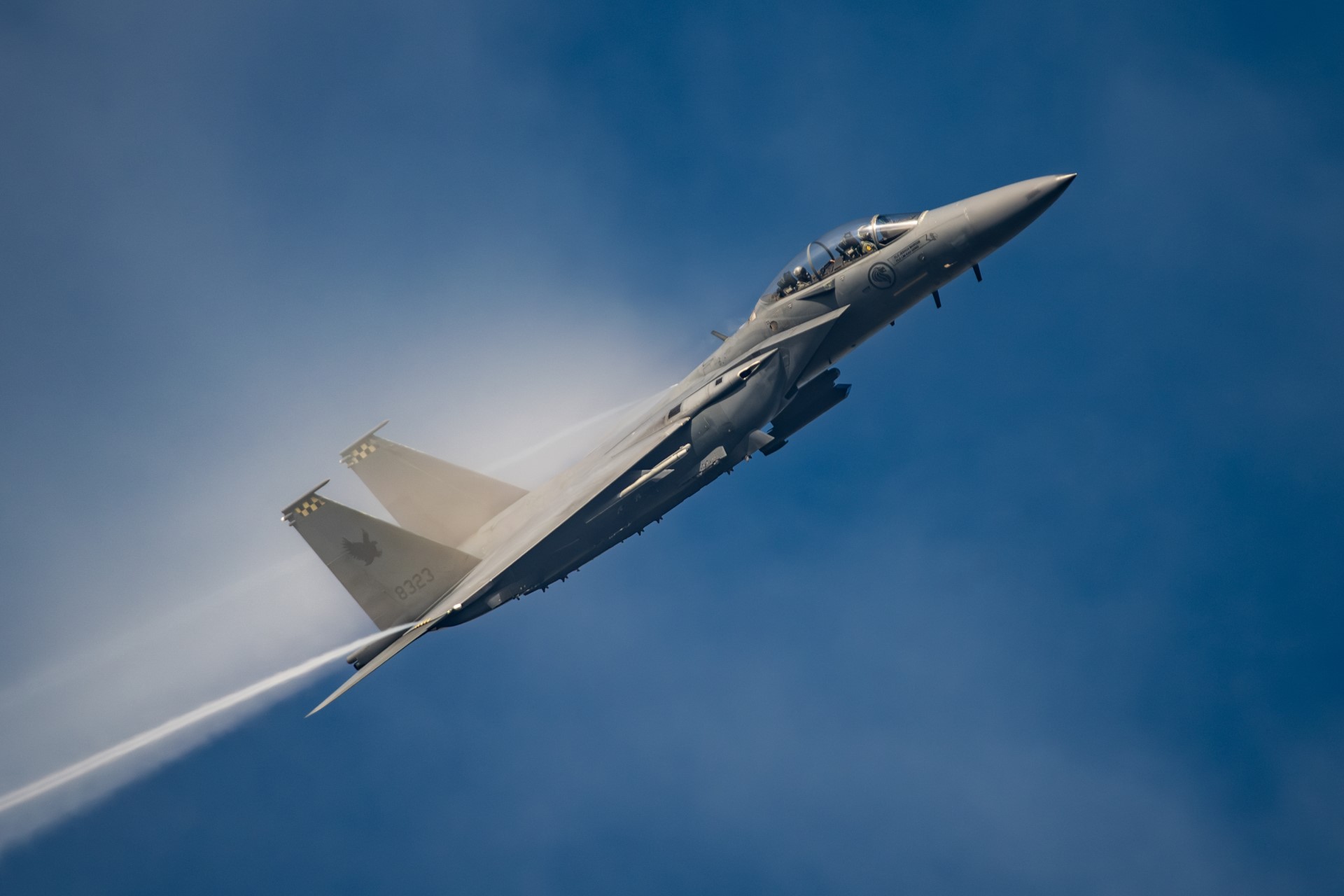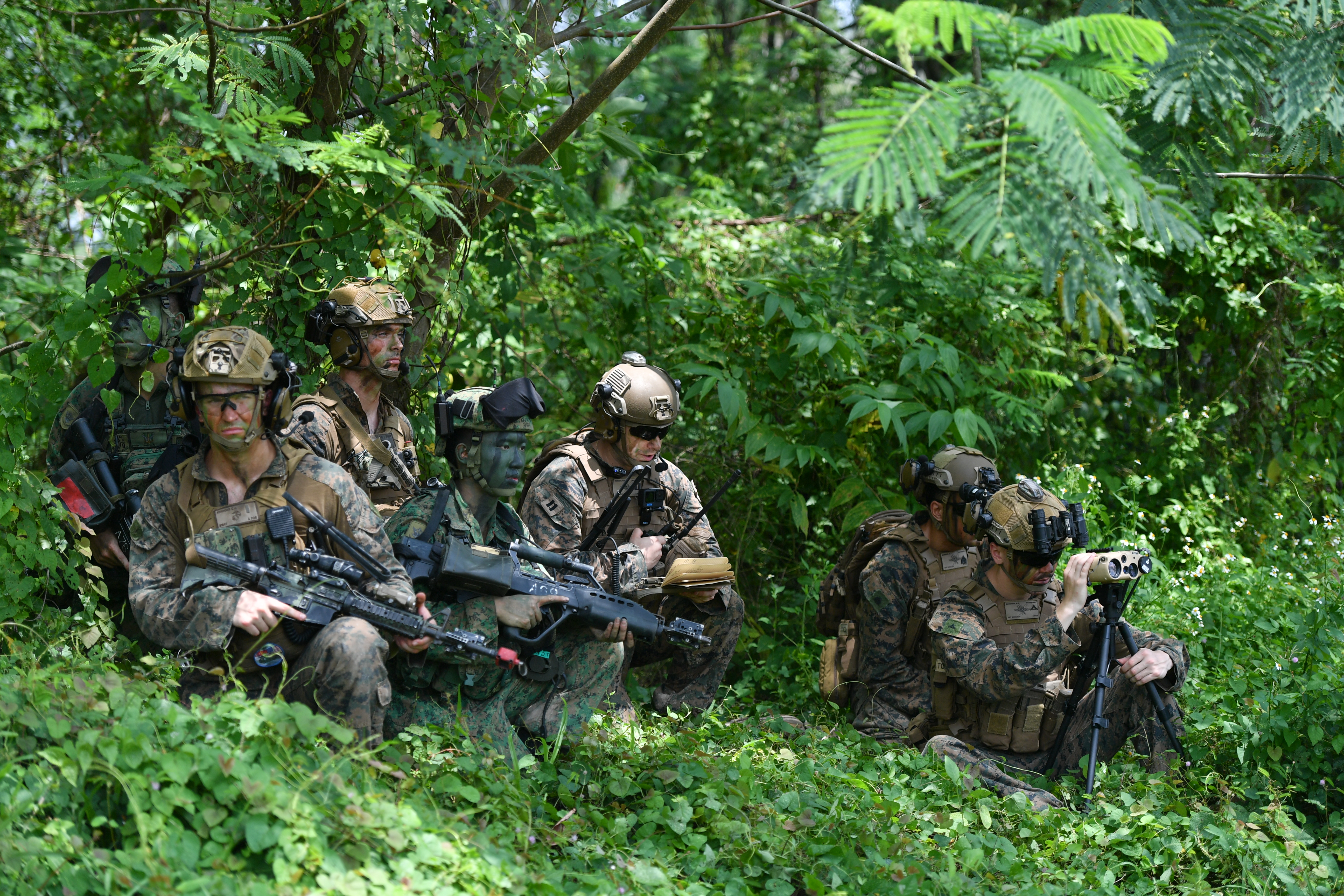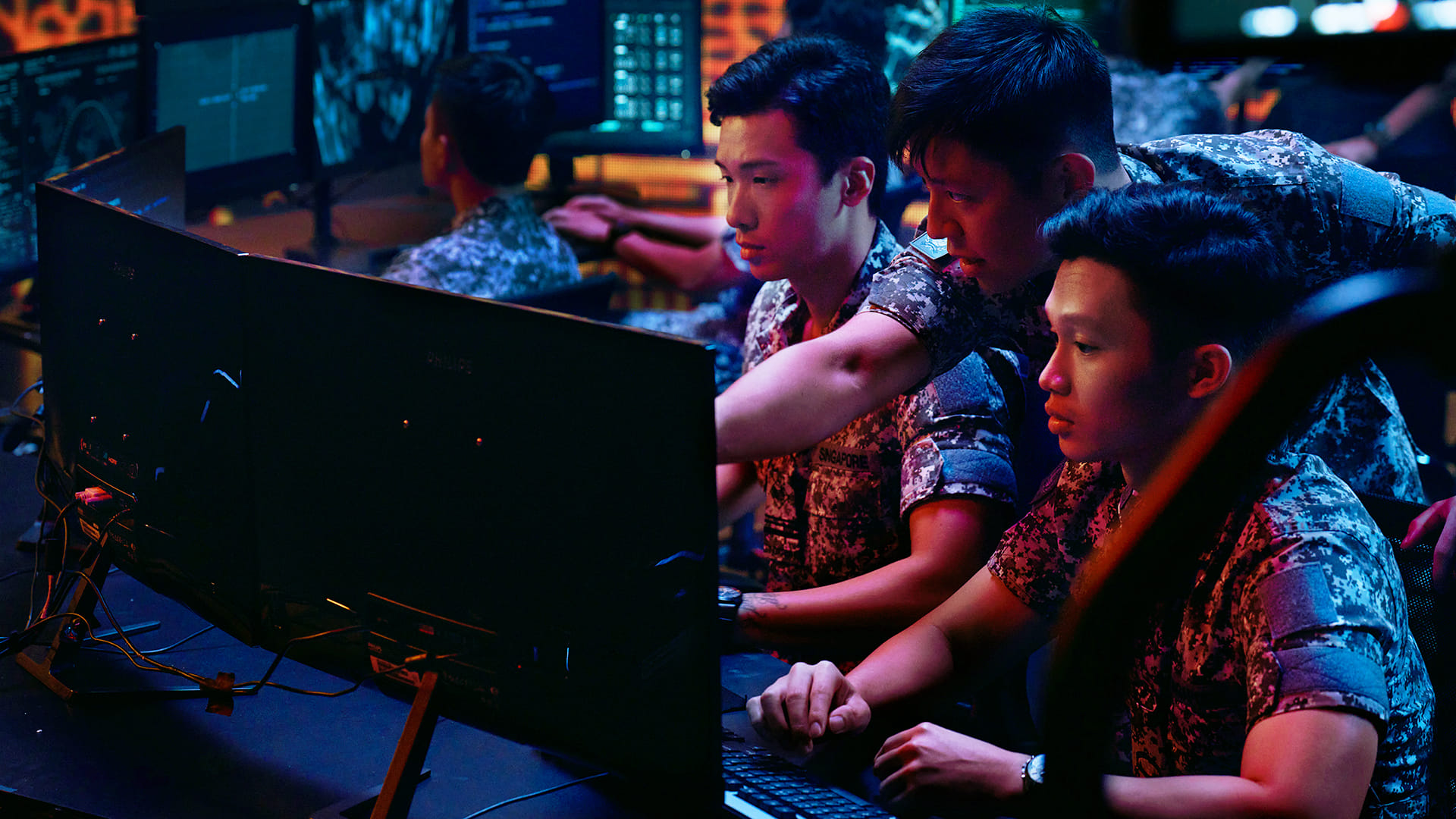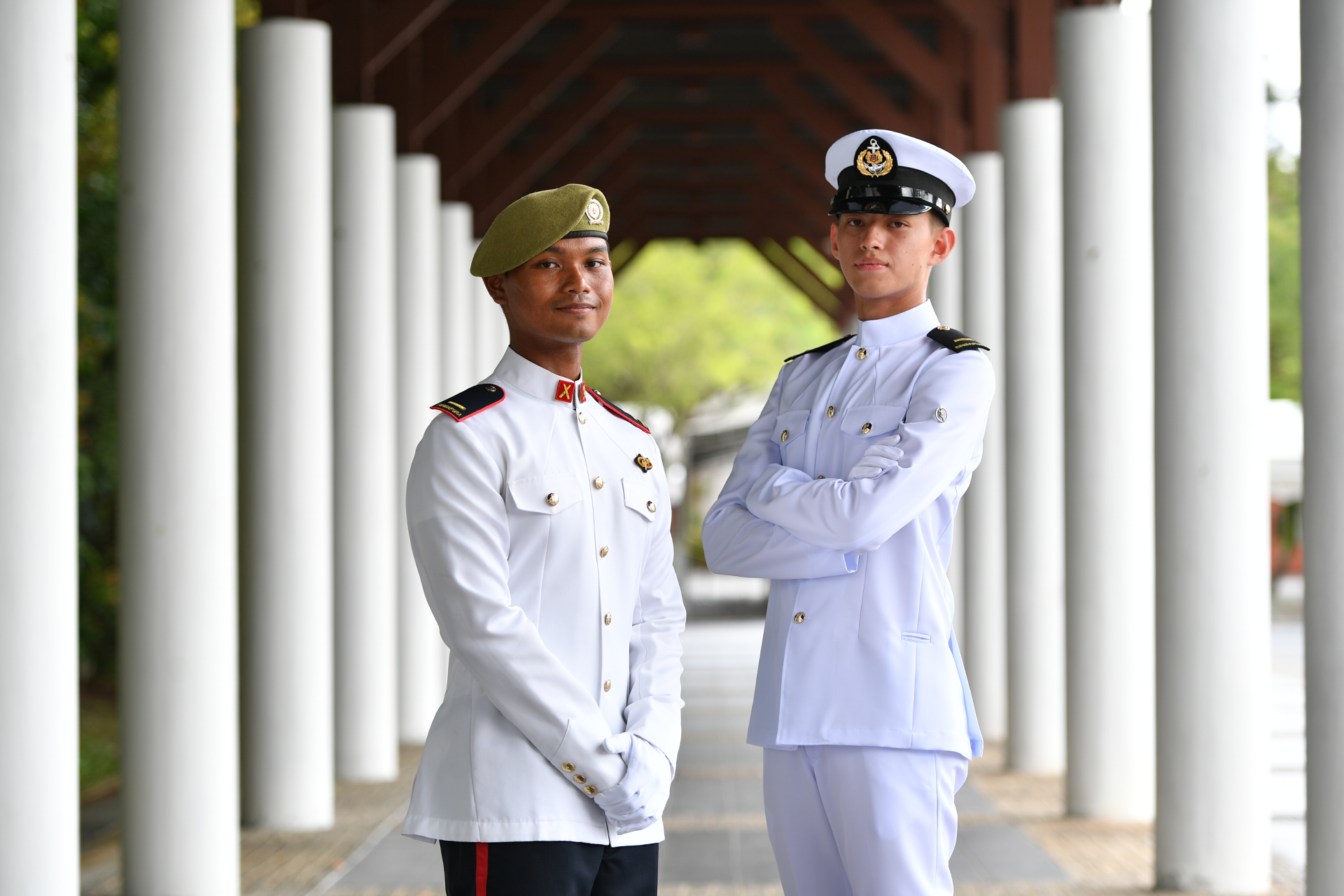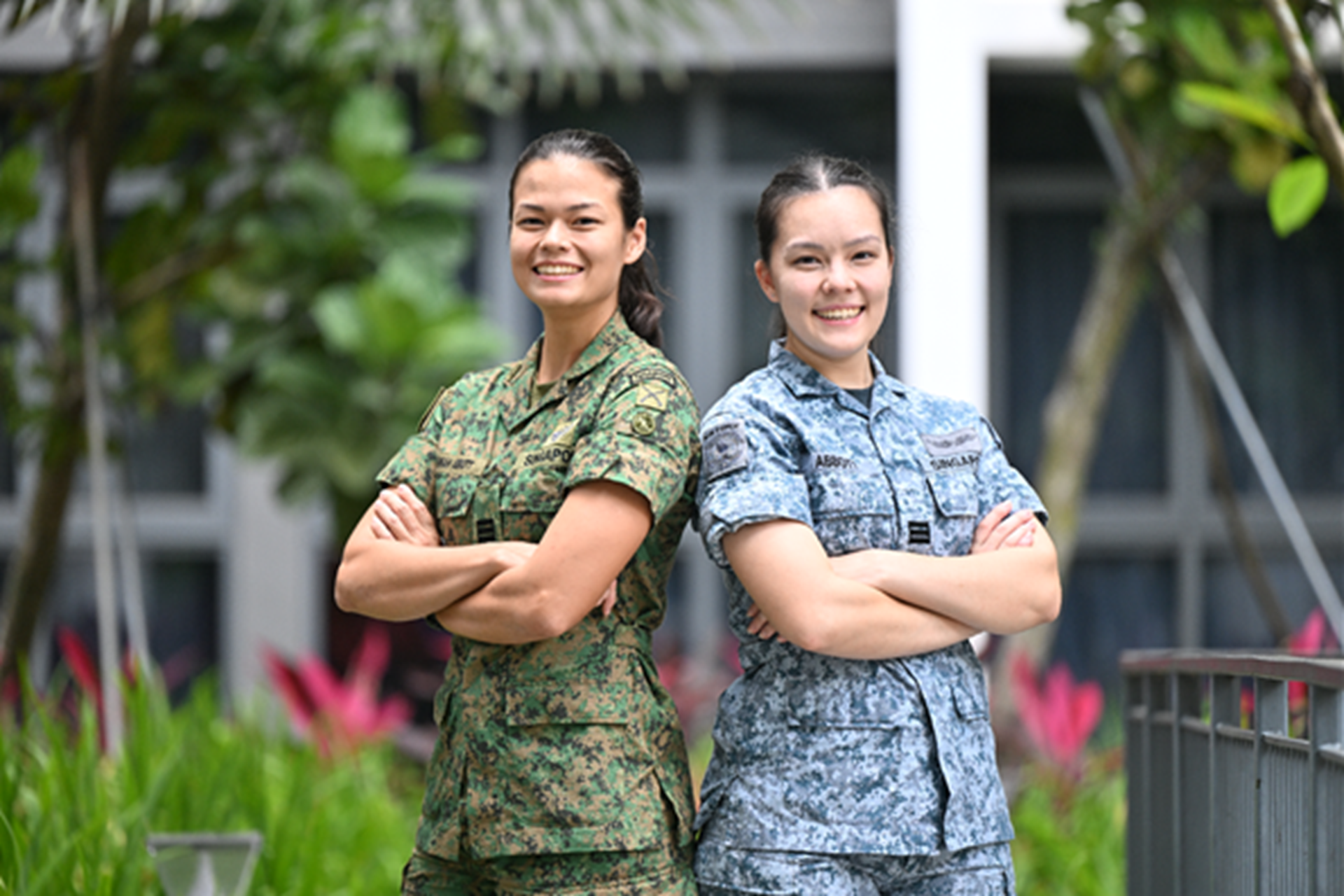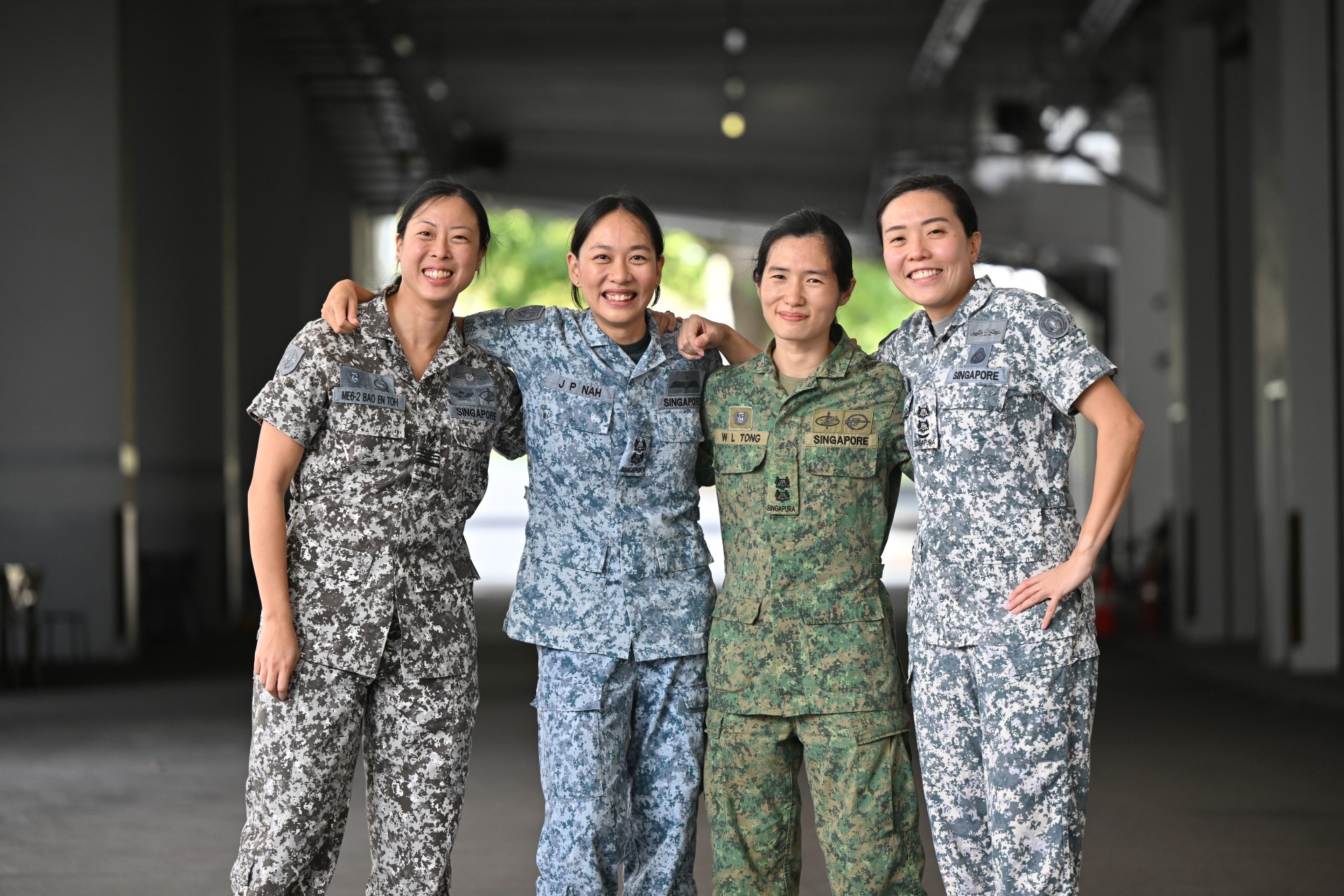LET'S GIVE THEM A GOOD FIGHT
// STORY Rachael Lim
// PHOTOS Simon Koh & Chua Soon Lye
Often known as "the enemy", these soldiers from the Opposing Force (OPFOR) company have an unusual task: playing the foe to make the Singapore Armed Forces (SAF) stronger.
It is 11pm. Despite the light from the full moon, one of the OPFOR's M113 armoured personnel carrier is well-hidden behind a bend in the road. It is quiet except for the chirping of crickets and the occasional cackle from signals equipment. The OPFOR soldiers from the Armour Training Institute (ATI) have been lying in ambush for hours and are ready for some action.
At midnight, the update that everyone has been waiting for arrives. "Enemy contacted. Let s rock and roll."
The OPFOR's opponent in this battalion-level exercise was the 428th Battalion, Singapore Armoured Regiment (428 SAR), who were back for their In-Camp Training.
The National Service (NS) unit had returned to camp a week earlier to begin preparations for the four-day-three-night Army Training Evaluation Centre (ATEC) evaluation. The unit will be assessed on their combat proficiency and operational standards and given a Readiness Condition status.
This is where the OPFOR plays an indispensible role as an evaluation partner, said Commander ATEC Colonel (COL) Lee Kuan Chung.
Neutrality and realism
"Can you imagine a unit going through an exercise without an opposition force? One where the unit assaults objectives like trenches and dummies and there is no feedback?" asked COL Lee.
"At the other extreme, to have a real enemy firing real bullets at you is something that we cannot replicate. So we have something in-between, an opposition force, a 'thinking enemy' that gives you a fight, provides you with feedback and forces you to think about how to capture the objectives."
When he joined the SAF in 1991, there was no dedicated OPFOR unit, recounted COL Lee, and units took turns to play the OPFOR. He elaborated: "To make sure that we had consistency and for all evaluations to be credible, we set up an OPFOR company."
Established in 1995 under HQ ATEC, OPFOR later branched out to form two OPFOR companies - one housed under the Infantry Training Institute (ITI), for infantry, guards and commando units' evaluation, and the other in ATI for armour units' evaluation.
COL Lee said that with the OPFOR, who plays the role of the Red Forces (hostile forces in military lingo), there is now added neutrality and realism in any evaluation exercise. This is because units, who play the role of "friendly" Blue Forces, fight the same OPFOR each time, and the OPFOR simulates a real-life opponent.
"Whenever the evaluated units complain that the OPFOR is giving them a tough time, that's an indicator for me that the OPFOR is doing a good job," said COL Lee.
With two forces coming head to head, tensions may run high, especially when the two have their meals in the same canteen.
"When the units go for evaluation, they even take a picture of the Officer Commanding (OC) and say 'This is the company commander of the OPFOR. Shoot to kill'."
COL Lee regards this as healthy tension because with the OPFOR, there is now a common enemy to focus on and it becomes a means to rally the troops.
"Whether you are an NS unit or an active unit, the OPFOR fights just as hard. I always give the OPFOR the same mission statement: Go out there and give hell."
- COL Lee on OPFOR's objective in an evaluation exercise
"As we move along the roads, we see the obstacles they create and we say 'This OPFOR really gives us big trouble' because we need to clear every obstacle they build in order to use the roads to advance... The harder they fight us, the more it builds our fighting capabilities as a battalion."
- Lieutenant Colonel (NS) Ho Yew Keong, Commanding Officer, 428 SAR, on his battalion's experience with the OPFOR
Credible opposition
Captain (CPT) Lin Zhenda, OC of ATI's OPFOR, was unfazed when told about having his face pinned on a bulletin board as "the enemy".
"We want to give the units a realistic and professional fight. We fight with the SAF's core values in mind and we play fair so that after the sparring, they will feel that they have learnt something from the exercise and we can increase the operational readiness of the battalions," said the 31-year-old.
As the OC, his role is to draw up the battle plan, clear it with his commanders and communicate it to the three platoons under his charge. He also makes tactical decisions for the company as the fight develops during the mission.
As the unit that supports two active and two NS units for ATEC evaluations each year (ITI's OPFOR supports eight ATEC evaluations in a year), CPT Lin and his men spend 43 out of 52 weeks a year outfield, both locally and overseas at exercises such as Exercise Wallaby.
This is because in addition to supporting ATEC evaluations and battalion-level exercises, time is spent training 30 greenhorn troopers who come in from the Basic Military Training Centre twice a year to be proficient in armour tactics.
The training includes not only tactical skills, but also knowledge of how the Blue Forces fight. This enables them to stay ahead of the enemy.
"The SAF adopts the Observe, Orientate, Decide, Act (OODA) framework. As long as you can out-OODA the thinking cycle, you're always one step ahead of the enemy," explained CPT Lin on how the OPFOR delays the Blue Forces from reaching their objectives.
Because each battalion fights differently, pre-mission intelligence is essential in helping the OPFOR size up their opponent to develop the battle plan.
Said CPT Lin: "We look at (the commander's) character and we try to think like him. There are other dynamics - are there internal conflicts? Which company s combat fitness is better?"
On the ground, CPT Lin's troopers provide him with regular updates on the situation - the enemy's movements and where they were spotted. From there, he makes an assessment and decides on the next few steps to take.
"It's a win-win situation for both as they would have a better understanding of each other's strategies. In future, they can derive new ideas on how to attack and delay each other."
- Lieutenant (NS) Ng Choon Hiong from 451 SAR, who was attached to the ATI OPFOR for their battalion-level exercise with 428 SAR, on how the Blue Forces would benefit from training with the OPFOR
Battling overseas
Apart from local ATEC exercises, the OPFOR also goes overseas to support units which have their evaluations there. In his capacity as an OPFOR OC, CPT Lin has participated in overseas exercises such as Exercise Wallaby, held at Shoalwater Bay in Australia.
At last year's exercise, a platoon from ATI OPFOR helped augment ITI OPFOR's strength as they went up against the 5th Battalion, Singapore Infantry Regiment (5 SIR). ATI OPFOR also participated in 41 SAR's ATEC evaluation during the exercise.
While each exercise has its own challenges, CPT Lin said the toughest missions are always the ones that take place overseas. This is because the area where the battle takes place is larger, and most of the OPFOR NSF commanders and troopers would be unfamiliar with the different terrain there.
Lance Corporal (LCP) Mohamed Nasri Bin Nasir, who is from the ITI OPFOR, described a challenge that he and his peers had to overcome at last year's Exercise Wallaby. The high diurnal temperature range meant that it was very hot during the day and chilly at night as the temperature dipped to about six degrees Celsius.
"We were supposed to keep alert throughout the night but because it was very cold, it was very hard to keep our focus so we took turns to be on guard," said the 22-year-old.
Third Sergeant (3SG) Adwin See has participated in over 10 OPFOR exercises, but even with these experiences under his belt, he treats each exercise like his first and always puts in his best.
He said: "Each outfield (exercise) is a different challenge because the units have different ways of fighting. We head out with the mindset that they are going to give us a good fight and we also have to give them a good fight."
Using tactics like sneaking around to assault the Blue Forces from the rear, the 21-year-old from ITI OPFOR said: "On the battlefield, the situation is fluid and we may have to use a tactic that is different from what we planned. It's about how we can give the Blue Forces a better challenge...(and) there is a lot of teamwork and communication required."
For 2SG Gabriel Tay, being in the ATI OPFOR is a unique learning experience. "We have the freedom to think about how to be an enemy, so we give (the Blue Forces) a lot of problems," he said.
Just before he left to ensure that the obstacles were ready for a battalion-level exercise, PIONEER asked if he had anything to say to the Blue Forces he would be facing off against. The 24-year-old replied: "Good luck and have a good fight."
"I always get teased but they understand that we are the bad guys to help them learn in their training. My friends, who graduated with me from Specialist Cadet School, are at 41 SAR and when we fought at ATEC, I "killed" them. We joke about it. It's okay."
- 2SG Tay on being part of the SAF's OPFOR
Providing feedback
When staking out with the Opposing Force (OPFOR) troops during a battalion-level exercise, PIONEER observed Captain (CPT) Lin Zhenda providing feedback to his soldiers while they were lying in wait for the Blue Forces.
"Do you hear the dogs barking? What does that mean?" CPT Lin asked his OPFOR troopers. He went on to explain that it could signal that the Blue Forces were in close proximity.
Providing feedback not just after but also during the exercise is an important process in teaching the troopers to make good decisions. "As regulars, we have been fighting on the ground for some time, so we have lots of experience. It may not be very obvious to the Full-time National Servicemen, but when the dogs start barking, it tells you that there could be someone at your flank and you need to take note," he said.
After the exercise, OPFOR also receives feedback from Headquarters Army Training Evaluation Centre on gaps in their battle plan and times where, for instance, their use of artillery fire was ineffective.
The Battlefield Instrumentation system, which connects soldiers and weapons systems together using the Global Positioning System, is able to capture screenshots during the fight for review later. The information is then shared with both the OPFOR and Blue Forces for future improvement.
Wired for realism
During training and evaluations, both the Opposing Force (OPFOR) company and Blue Forces use the Battlefield Instrumentation (BFI) system.
The system comprises the Tactical Engagement System (TES), laser transmitters to simulate weapon fires and modules to detect these fires; the Control Centre, manned by analysts who monitor the battle in real time; and Ground Relay stations which act as a bridge that facilitates the flow of information between soldiers and the Control Centre.
To simulate artillery fire and air strikes over a large area, which are used to disrupt, delay and destroy the enemy en route to their form-up point, both the OPFOR and Blue Forces make use of the Simulated Area Weapon Effect (SAWE) system.
The use of these area weapons is planned for in advance, and the target area coordinates and activation code words are registered with the Control Centre.
When they want to call for fire, commanders contact the Control Centre, which will then activate the area weapons via SAWE. On the ground, the soldiers' TES will sound off if they are within the blast radius of the area attacks.
